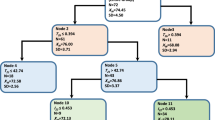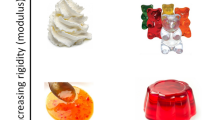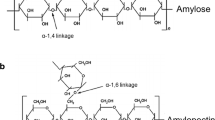Abstract
Prediction of the content of water, oil, and protein in rape and mustard seed was examined by a combination of low-field 1H nuclear magnetic resonance (LF-NMR) and chemometrics, enabling utilization of the entire relaxation curves in the data evaluation. To increase the range of relative contents, the untreated seeds were wetted and dried; each treatment was followed by NMR analysis. The chemometric results are compared to traditional evoluation by multiexponential fitting of the relaxation curves. For this purpose a new jackKnife validation procedure was developed to evaluate the number of exponential components objectively. Classification of the two kinds of seeds was easily performed by LN-NMR. Partial least squares regression to oil content in untreated rape and mustard seed yielded models with correlation coefficients of r=0.88 and 0.89 with root mean square error of cross-validation (RMSECV) of 0.84 and 0.45, respectively. The rapeseed model was based on one component, wheres the mustard seed model was based on two components. If the seeds were dried, the predictive performance improved to r=0.98 and RMSECV=0.38 for rapeseed and to r=0.95 and RMSECV=0.38 for mustard seed. Upon drying, prediction of protein content in mustard seed improved, whereas the prediction of protein for rapeseed deteriorated. Global models, including the combination of untreated, wet, and dry seeds, all resulted in a robust and good predictive performance with RMSECV in the range 0.8–1.3% to water, oil, and protein content. It was demonstrated that drying the seeds to simultaneously determine water and oil content was not necessary when chemometrics was applied on the relaxation curves.
Similar content being viewed by others
References
Tiwari, P.N., P.N. Gambhir, and T.S. Rajan, Rapid and Nondestructive Determination of Seed Oil by Pulsed Nuclear Magnetic Resonance Technique, J. Am. Oil Chem. Soc. 51:104–109 (1974).
Hahn, E.L., Spin Echoes, Phys. Rev. 80:580–594 (1950).
Rubel, G., Simultaneous Determination of Oil and Water Contents in Different Oilseeds by Pulsed Nuclear Magnetic Resonance. J. Am. Oil Chem. Soc. 71:1057–1062 (1994).
Tiwari, P.N., Pulsed NMR for Rapid and Nondestructive Determination of Oil in Oilseeds, Bruker Minispec Application Notes 9 (1999) Bruker Analytische Messtechnik, Karlsruhe, Germany.
Srinivasan, V.T., Comparison of Different Pulse Sequences in the Nondestructive Estimation of Seed Oil by Pulsed Nuclear Magnetic Resonance Techniques J. Am. Oil Chem. Soc. 56: 1000–1003 (1979).
Brosio, E., F. Conti, A. Nola, O. Scorano, and F. Balestrier, Simultaneous Determination of Oil and Water Content in Oliver Husk by Pulsed Low Resolution Nuclear Magnetic Resonance, J. Food Technol. 16:629–636 (1981).
Gambhir, P.N., Application of Low-Resolution Pulsed NMR to the Determination of Oil and Moisture in Oilseeds, Trends Food Sci. Technol. 3:191–196 (1992).
AOCS, Simultaneous Determination of Oil and Moisture Contents of Oilseeds Using Pulsed Nuclear Magnetic Resonance Spectroscopy, Official Methods and Recommended Practices of the American Oil Chemists' Society, edited by D. Firestone, AOCS Press, Champaign, 1997 Recommended Practice Ak 4-95
AOCS, Determination of Oil Content in Oilseeds, ——Ibid.,, Official Method Am 2-93.
AOCS, Oil Content of Rapeseed by Nuclear Magnetic Resonance, ——Ibid., Recommended Practice Ak 3-94.
Bechmann, I.E., H.T. Pedersen, L. Nørgaard, and S.B. Engelsen, Comparative Chemometric Analysis of Transverse Low-Field 1H NMR Relaxation Data, in Advances in Magnetic Resonance in Food Science, edited by P.S. Belton, B.P. Hills, and G.A. Webb, Royal Society of Chemistry, London, 1999, pp. 217–225.
Jepsen, S.M., H.T. Pedersen, and S.B. Engelsen, Application of Chemometrics to Low-Field 1H NMR Relaxation Data of Intact Fish Flesh, J. Sci. Food Agric. 79:1793–1802 (1999).
Tkachuk, R., Oil and Protein Analysis of Whole Rapeseed Kernels by Near Infrared Reflectance Spectroscopy, J. Am. Oil Chem. Soc. 58:819–822 (1981).
Velasco, L., J.M. Fernández-Martínez, and A. De Haro, Determination of the Fatty Acid Composition of the Oil in Intact-Seed Mustard by Near-Infrared Reflectance Spectroscopy, ——Ibid. 74: 1595–1602 (1997).
Vold, R.L., J.S. Waugh, M.P. Klein, and D.E. Phelps, Measurement of Spin Relaxation in Complex Systems, J. Chem. Phys. 48:3831–3832 (1968).
Carr, H.Y., and E.M. Purcell, Effects of Diffusion on Free Precession in Nuclear Magnetic Resonance Experiments, Phys. Rev. 94:630–638 (1954).
Meiboom, S., and D. Gill, Modified Spin-Echo Method for Measuring Nuclear Relaxation Times, Rev. Sci. Instrum. 29:688–691 (1958).
Troëng, S., Oil Determination of Oilseed. Gravimetric Routine Method, J. Am. Oil Chem. Soc. 32: 124–126 (1955).
Appelqvist, L.-Å., Further Studies on a Multisequential Method for Determination of Oil Content in Oilseeds, ——Ibid. 44:209–214 (1967).
AACC, Crude Protein—Kjeldahl Method, Boric Acid Modification, Approved Methods of the American Association of Cereal Chemists, American Association of Cereal Chemistis, St. Paul, 1995, AACC Method 46-12.
Wold, S., K. Esbensen, and P. Geladi, Principal Components Analysis, Chemon. Intell. Lab. Syst. 2:37–52 (1987).
Geladi, P., and B.R. Kowalski, Partial Least-Squares Regression: A Tutorial, Anal. Chim. Acta 185:1–17 (1987).
Martens, H., The Philosophy of Partial Least Squares Regression, Spectrosc. World 3:26–27 (1991).
Martens, H., and P. Dardenne, Validation and Verification of Regression in Small Data Sets, Chemon. Intell. Lab. Syst. 44: 99–122 (1998).
Belton, P.S., Can Nuclear Magnetic Resonance Give Useful Information About the State of Water in Foodstuffs? Comm. Agric. Food Chem. 2:179–209 (1990).
Efron, B., The Jackknife the Bootstrap and Other Resampling Plans, Society for Industrial and Applied Mathematics, Philadelphia, PA (1982).
Martens, H., and M. Martens, Modified Jack-knife Estimation of Parameter Uncertainty in Bilinear Modelling (PLSR), Food Qual. Preference 11:5–16 (2000).
Author information
Authors and Affiliations
Corresponding author
About this article
Cite this article
Pedersen, H.T., Munck, L. & Engelsen, S.B. Low-field 1H nuclear magnetic resonance and chemometrics combined for simultaneous determination of water, oil, and protein contents in oilseeds. J Amer Oil Chem Soc 77, 1069–1077 (2000). https://doi.org/10.1007/s11746-000-0168-4
Received:
Accepted:
Issue Date:
DOI: https://doi.org/10.1007/s11746-000-0168-4




